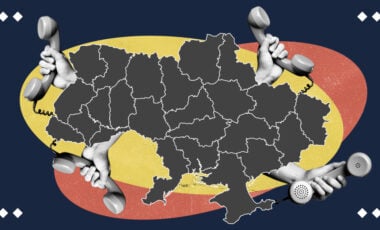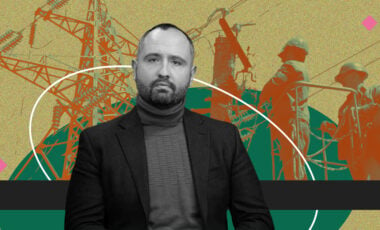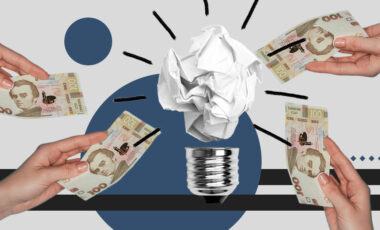Ukraine's solar and wind energy capacity surpasses electricity demand by nearly 150 times – Greenpeace survey
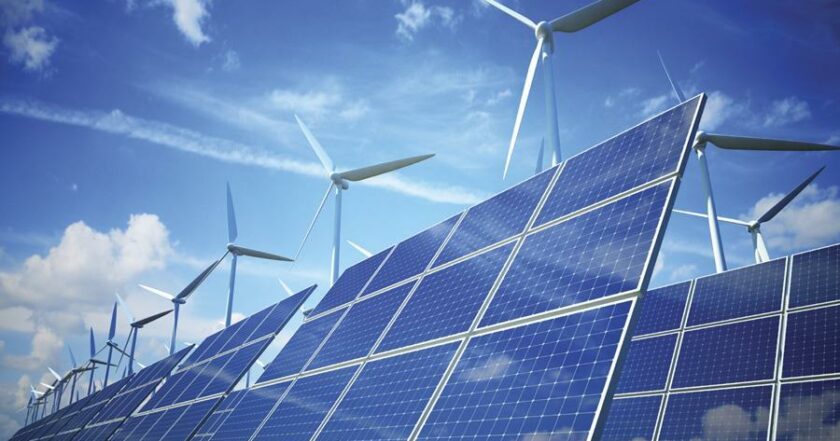
According to a recent study by the Institute for Sustainable Futures at the University of Technology Sydney, commissioned by Greenpeace, even a tiny portion (1%) of the land area is sufficient to meet all of Ukraine's electricity needs.
Rubryka informs about this.
What is the problem?
The missile attacks carried out by Russia on Ukraine have caused a great deal of suffering for innocent civilians, completely disrupting the lives of many. The consistent targeting of essential infrastructure by Russia has greatly affected the supply of electricity and heat for countless households. As of the morning of April 11, 2024, Russia has launched 18 missile and 38 drone attacks to destroy the Ukrainian energy industry. The matter of energy sustainability in the country must become a top priority on the political agenda in this current situation.
According to Greenpeace, renewable energy can play a significant role in this regard. Specifically, we are referring to solar and wind power, as these technologies have the potential to become the most important, cost-effective, and eco-friendly sources of renewable energy. Furthermore, widespread wind and solar energy adoption presents massive economic opportunities.
Ukraine's large expanse of land and extensive territory creates the potential for the country to not only achieve energy self-sufficiency but also become a major supplier of clean energy and hydrogen. Furthermore, there is a strong desire for energy partnerships and trade with European Union countries.
Keeping this in mind, Greenpeace Germany enlisted top scientists from the Institute for a Sustainable Future at the University of Technology Sydney to assess and determine the potential of solar and wind energy in Ukraine. Their results will likely spark conversations about the direction of Ukraine's future energy policies.
What is the solution?
The solar and wind energy potential in Ukraine was analyzed based on digital maps of the Geoinformation System (GIS). The primary purpose of GIS mapping is to determine the availability of solar and wind energy resources. Electricity consumption by Ukrainians in 2021, before the start of a full-scale invasion, was taken as a benchmark for calculations.
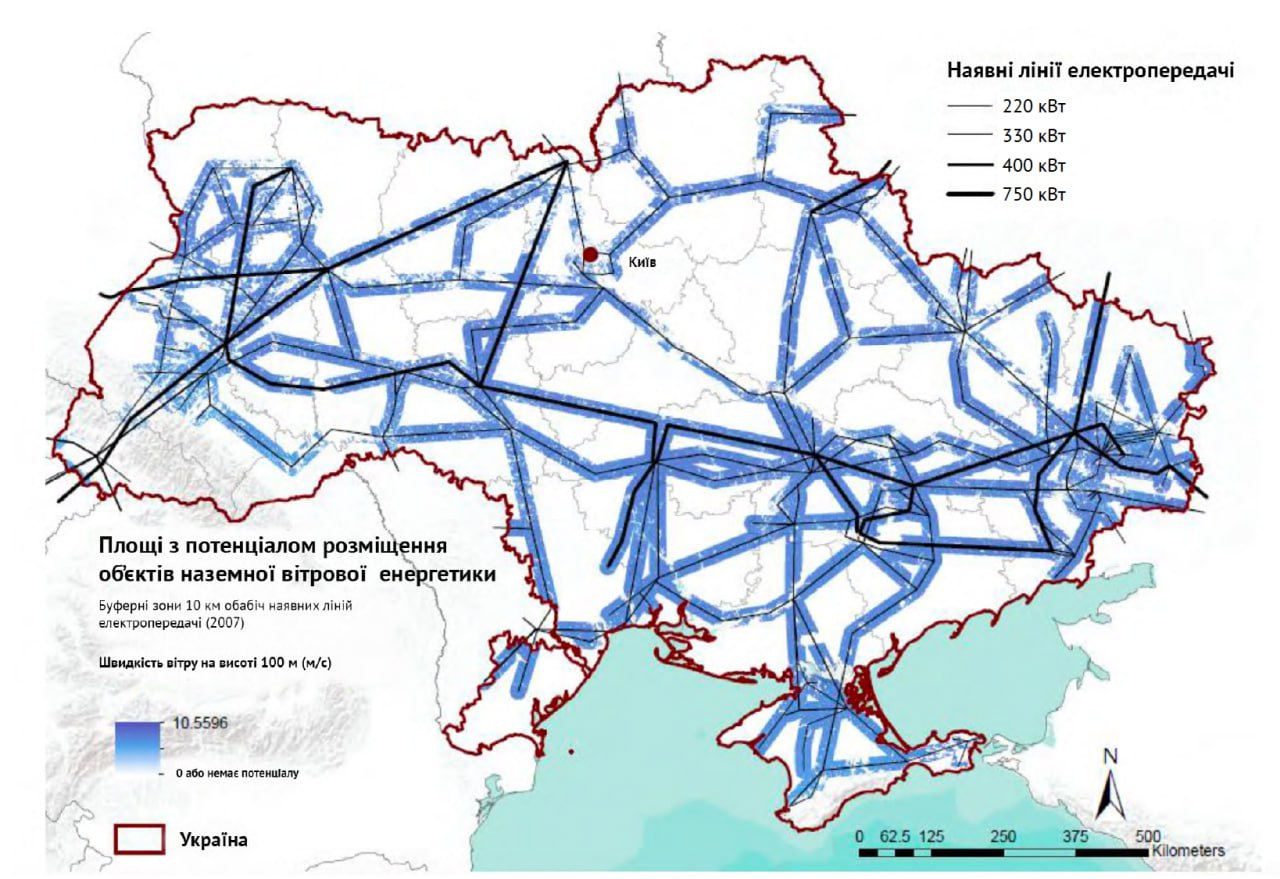
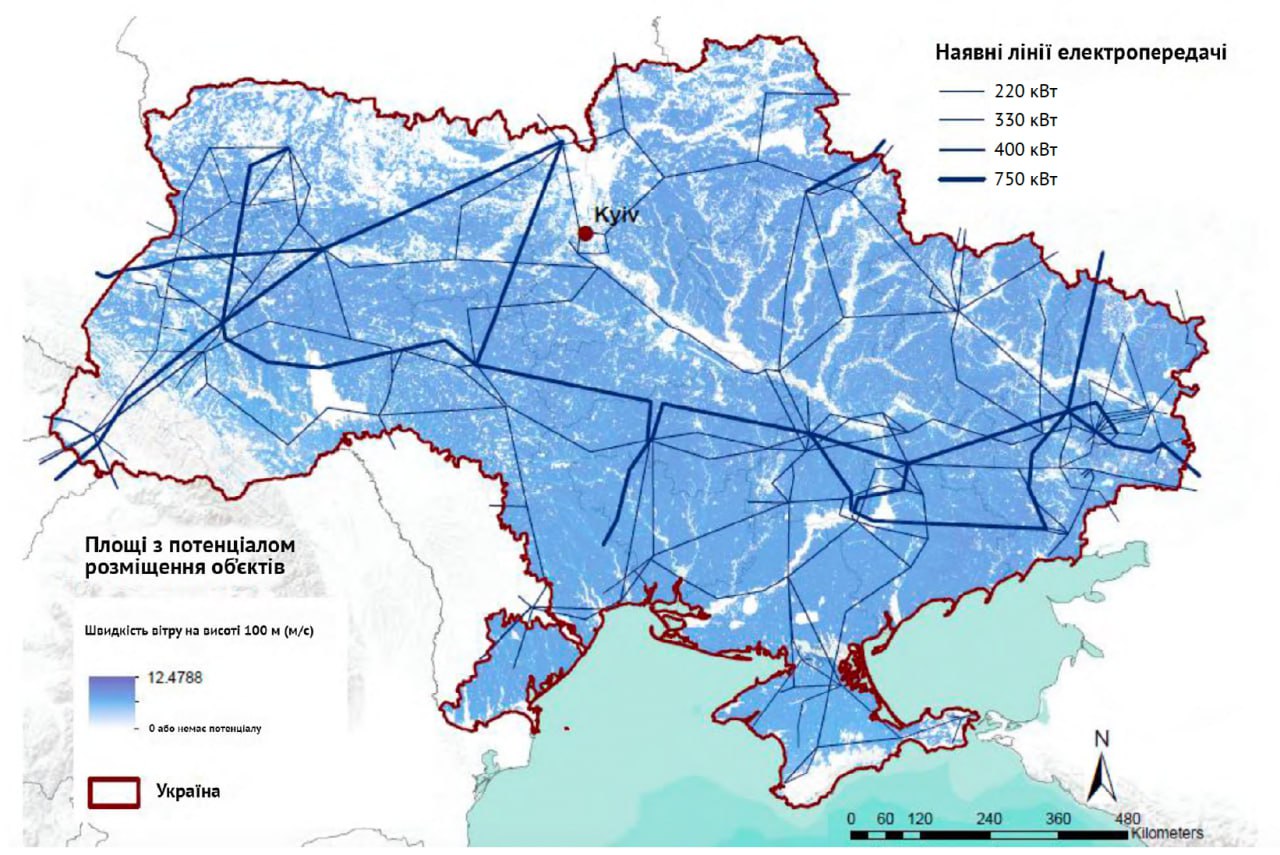
The main data of the study:
- Ukraine can meet its electricity demand using only 1% of the area suitable for solar and wind installations;
- Solar power plants in Ukraine can produce 5,084 GW of solar energy. This is 60 times more than the 83 GW proposed by the Ukrainian government in the "Ukraine Plan" (211 pages);
- Ukraine has vast solar and wind energy potential, surpassing the current electricity demand (125 TWh/year) by almost 150 times.
- Ukraine may have a significant surplus in energy exports. To use this economic potential, it is necessary to strengthen existing power lines and build new ones, which will contribute to better integration with EU countries. By 2030, these efforts could create about 20,000 new jobs.
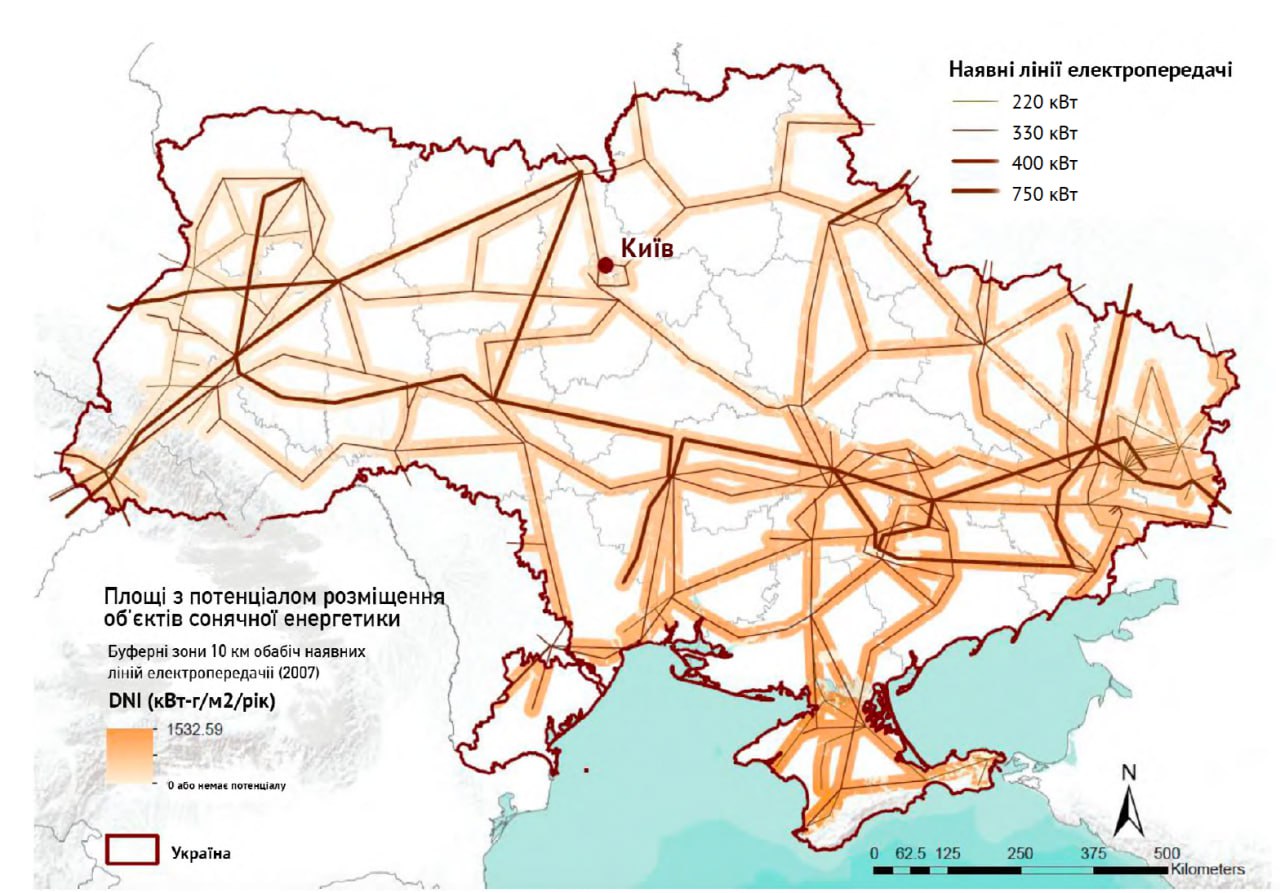
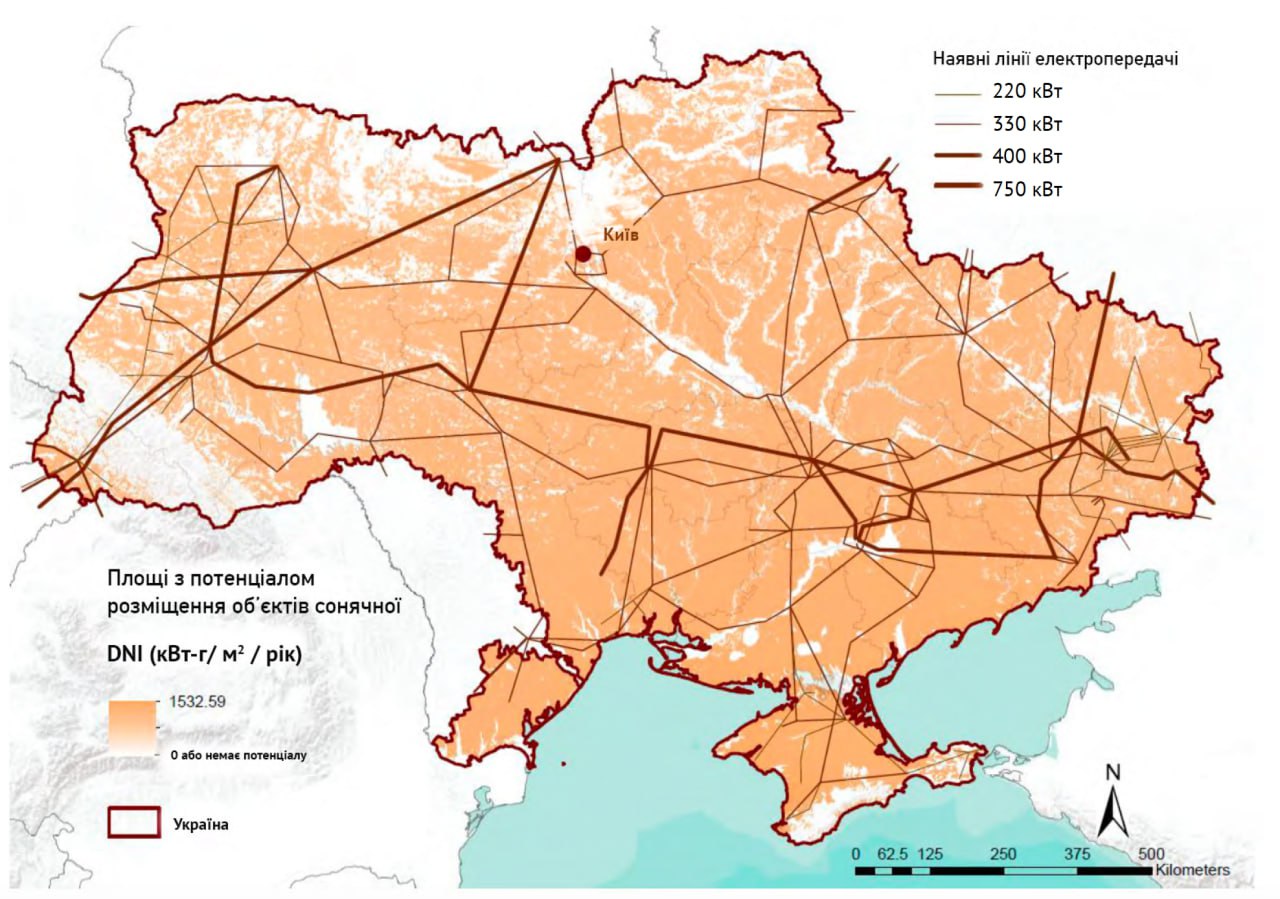
How does it work?
The research examines the potential for onshore wind and solar energy in two scenarios.
- In Scenario #1, all land areas in the country that are suitable for sustainable use and geologically feasible are taken into account.
- In Scenario #2, only suitable areas within a maximum of 10 kilometers from the nearest high-voltage power line are considered. Within this scenario, it turned out that 0.46% of solar and 0.4% of wind potential is enough to provide energy for the entire country.
Assuming a more realistic scenario where only areas within a 10-kilometer radius of a high-voltage power line can be accessed, just one percent of the country's territory would be enough to meet the electricity demands from wind and solar energy. It's important to mention that these calculations are based on the consumption levels of 2021, before the war.
"Solar and wind energy have proven to be particularly suitable for protecting the population of Ukraine from blackouts due to massive Russian attacks on the energy infrastructure. In addition, these capacities can be developed quickly and at affordable prices," says Andre Böhling, an energy expert at Greenpeace Germany. "However, the potential of renewable energy sources in Ukraine continues to be grossly underestimated. The European Commission and the Ukrainian government should significantly increase their ambitions for using renewable energy sources based on their interests."
For reference:
It should be noted that the Cabinet of Ministers [Ukraine's government – ed.] approved the order establishing the rules for applying the blackout schedules, which will start working on June 24. The government hopes this will allow it to ensure "fair schedules."
As reported, due to Russian shelling of Ukrainian energy facilities, the country's inhabitants will probably spend most of the day without electricity by winter.













